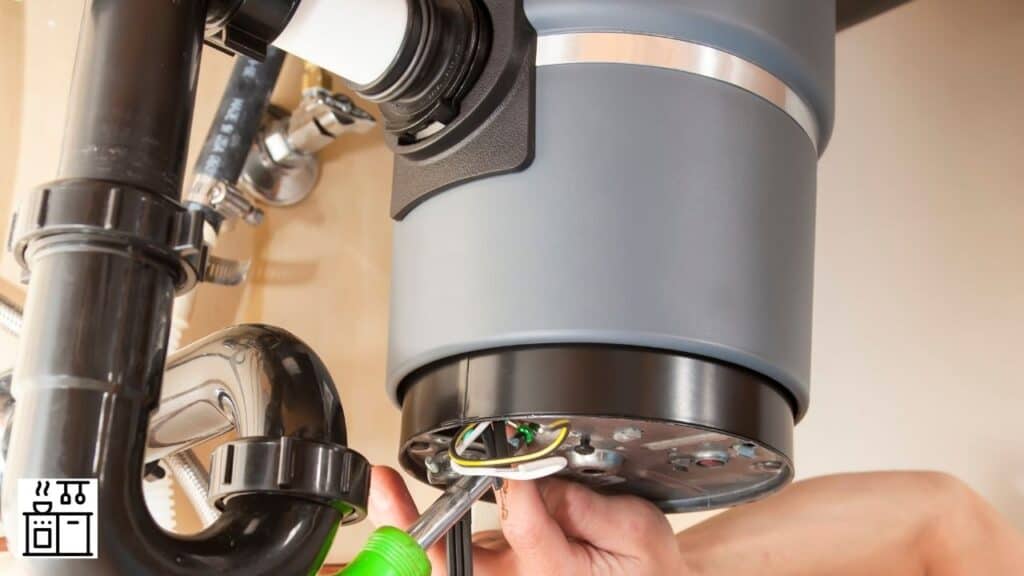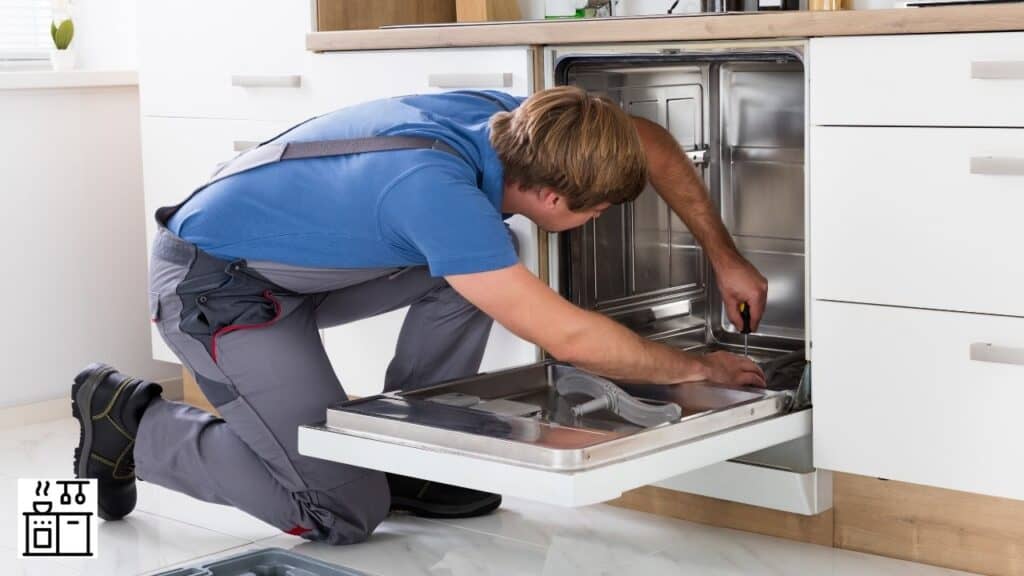Setting up your new kitchen is fun and exciting. However, it can be scary connecting various appliances to just one circuit. So, can the dishwasher and disposal be on the same circuit?
Yes, the dishwasher and disposal can be on the same circuit as long as you use the right kind of circuit breaker. You need to make sure that the load of both devices doesn’t exceed 80% of the circuit’s overall capacity. However, to operate both devices at the same time, two circuits might be ideal.
Let’s now go over the circuits that work best with these two devices.
- Circuit Requirements Of A Dishwasher And Garbage Disposal
- What Is A Circuit Breaker?
- Which Circuit Breaker Is Good For Garbage Disposals?
- Which Circuit Breaker Is Good For Dishwashers?
- What Are The Signs Of A Circuit Overload?
- GFCI And AFCI For Dishwashers and Disposals
- Can You Operate The Dishwasher And Disposal Simultaneously?
Circuit Requirements Of A Dishwasher And Garbage Disposal
Here are a few things to note regarding the circuit requirements of a dishwasher and garbage disposal.
Dishwashers
The voltage of any appliance is the rate at which the electricity flows through a point in the circuit to operate it.
For example, dishwashers are usually powered by 120 to 125 volts.
If the circuit carries more or less voltage than needed, there’s an increased risk of power failure.
So, it’s important to have a circuit that can operate on this amount of volts.
Garbage Disposals
Garbage disposals shred discarded food. They also make the water waste disposal secure.
As a result, they were designed to withstand these procedures. The disposals also run on 120 volts.
Even though dishwashers and disposals can both run on the same circuit, it’s usually better to power them by two separate circuits.
This way, you avoid any possibility of overloading the circuit and wreaking havoc on your appliances.
Recommended Further Reading:
- Examining the Dimensions of Dishwashers
- Are Dishwashers Hardwired? [How To Convert Hardwired To Plug-In?]
- What is the Amperage of a Dishwasher?
What Is A Circuit Breaker?
A circuit breaker protects appliances from an overcharge, short circuit, or power surge.
After the protection system of the circuit breaker identifies a malfunction, it stops the electric current flow.
The breaker isn’t like a fuse. A fuse only works once; it then needs to be replaced.
However, a circuit breaker can be reset manually or automatically to return to work.
How Do You Know Which Circuit Breaker Belongs To Which Device?
Open the exterior cover of the main electrical box to uncover the circuit breakers.
The breakers are listed by numbers or names on the back of the box’s panel.
You’ll also find an explanation of every switch and what it regulates is located beside each breaker number.
Find the one for the dishwasher and garbage disposal.
Each appliance should have wires connecting it to its appropriate slot.
Before you finish up, test to see if the circuit is working properly by switching on the main breaker.
If everything runs as it should, then great. If not, you’ll need to inspect it again to check for faulty connections.
Which Circuit Breaker Is Good For Garbage Disposals?

To safely run and operate a garbage disposal, it’s recommended you set up a 120 volt and 20 amp circuit breaker.
One 15-amp, 120-volt separate circuit is the minimum requirement.
To increase the amp to 20, you can install a tandem breaker.
Tandem breakers have two 15 amp circuit breakers combined into one unit.
They’re designed to accommodate two 120-volt circuits to fit into one circuit breaker box.
They work the same way as single breakers.
Yet, they’re more practical and safer when you have several appliances working simultaneously.
Which Circuit Breaker Is Good For Dishwashers?
Dishwashers all run on 120 volts.
However, they don’t all use the same amount of voltage, which is the main deciding factor when choosing a breaker.
The best thing to do is to read the packaging information of your appliance to see what the current consumption is.
However, it’s worth noting that most dishwashers need a single-pole breaker with a minimum of 15 amps.
Like the garbage disposal, you can increase the amps to 20.
If you opt for a 20 amp circuit, you can also use a tandem breaker to manage the heavy load more efficiently.
Related Further Reading:
- Is it Possible to Wash a Food Processor in the Dishwasher?
- Is it Safe to Put a Rice Cooker in the Dishwasher?
- Are Dishwashers Worth It? [How To Judge Their Worth?]
What Are The Signs Of A Circuit Overload?
There are numerous indicators that your circuits are overworked.
If there is an overload, the breaker will cut off all power to a specific section of your home.
It’s the quickest way to detect which circuits have overloaded and shorted out.
Flickering or fading lights are one possibility of a circuit overload.
Also, be careful when handling outlets. They can be hot to the touch, which is another indicator of an overloaded circuit.
The most dangerous indicator is smoke.
If you see smoke coming out of the breaker, shut off the main power supply in your home.
You’ll have to do a thorough inspection of all the wires and circuits or call a professional to come and take a look.
Other warning indications include buzzing noises and burnt smells.
Additionally, watch out for power tools that aren’t working to their full capacity.
That usually means they’re not getting the right amount of voltage they need to do the job.
GFCI And AFCI For Dishwashers and Disposals
GFCI and AFCI are both important safety measures.
GFCI stands for Ground Fault Circuit Interrupter. When an electrical current reaches certain values, a GFCI protects the user.
GFCI is designed to protect people from potential lethal electrical shocks.
It de-energizes the electricity quickly and prevents it from escalating.
The AFCI (Arc Fault Circuit Interrupter) is a fire-protection device.
AFCI devices are designed to protect the circuit and prevent any fire hazards.
AFCI monitors the electrical current in a circuit for irregular electric arc signatures.
Then it disconnects the electricity when unsafe arcing signatures are found.
In most kitchens, double breaker circuits with AFCI shielded breakers are set up to handle the high demand.
Additionally, GFCI output receptacles for devices such as dishwashers and disposals are installed.
It’s essential to have both safety measures installed.
After all, when you’re running both devices at the same time, the power consumption will be higher.
Therefore, you need to be prepared in case the circuit gets overloaded.
The standards for GFCI and AFCI vary per region. GFCI protection is usually necessary.
However, based on the regional understanding of the rule, you may not need AFCI safety.
Interesting Further Reading:
- Keeping Onions in the Fridge – Is it Possible?
- Why Do Dishwashers Take So Long? (Is It Normal?)
- Is It Possible to Place a Refrigerator on Its Side, Back, or Front?
Can You Operate The Dishwasher And Disposal Simultaneously?
When both the dishwasher and disposal are running at the same time, it could get tricky to keep the circuit in optimal condition.
For example, the load shouldn’t exceed 80% of the overall capacity of the circuit.
So keeping the minimal needed amperage can get pretty tricky.
The total amps will undoubtedly surpass 80% of the circuit amperage.
This could possibly happen when both devices run at the same time for a while.
This is why operating a dishwasher and garbage disposal on the same circuit at the same time isn’t a good idea.
Is it absolutely necessary to operate both devices at the same time?
If yes, then your only solution is to put them on two separate circuits to avoid circuit problems.
Bear in mind that if you use two separate circuits, you have to maintain the drainage system regularly.
It won’t be able to operate efficiently with both devices operating at the same time.
Furthermore, if the plumbing system in your home isn’t up to par, it could cause a whole slew of drainage problems.
Wastes from the garbage disposal system may go into the dishwasher.
Not only that, but food waste will begin to combine with the dishwasher water.
The waste will taint the dishwasher water and ruin the dishes.

